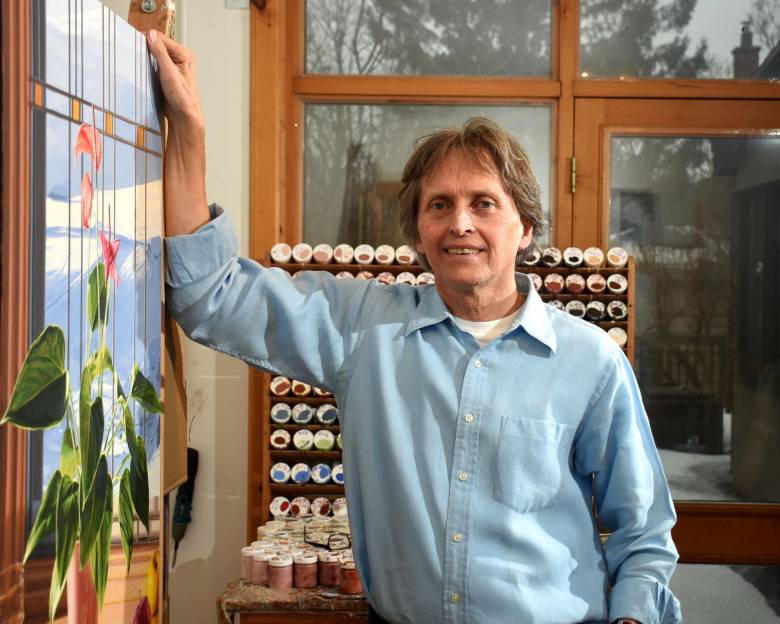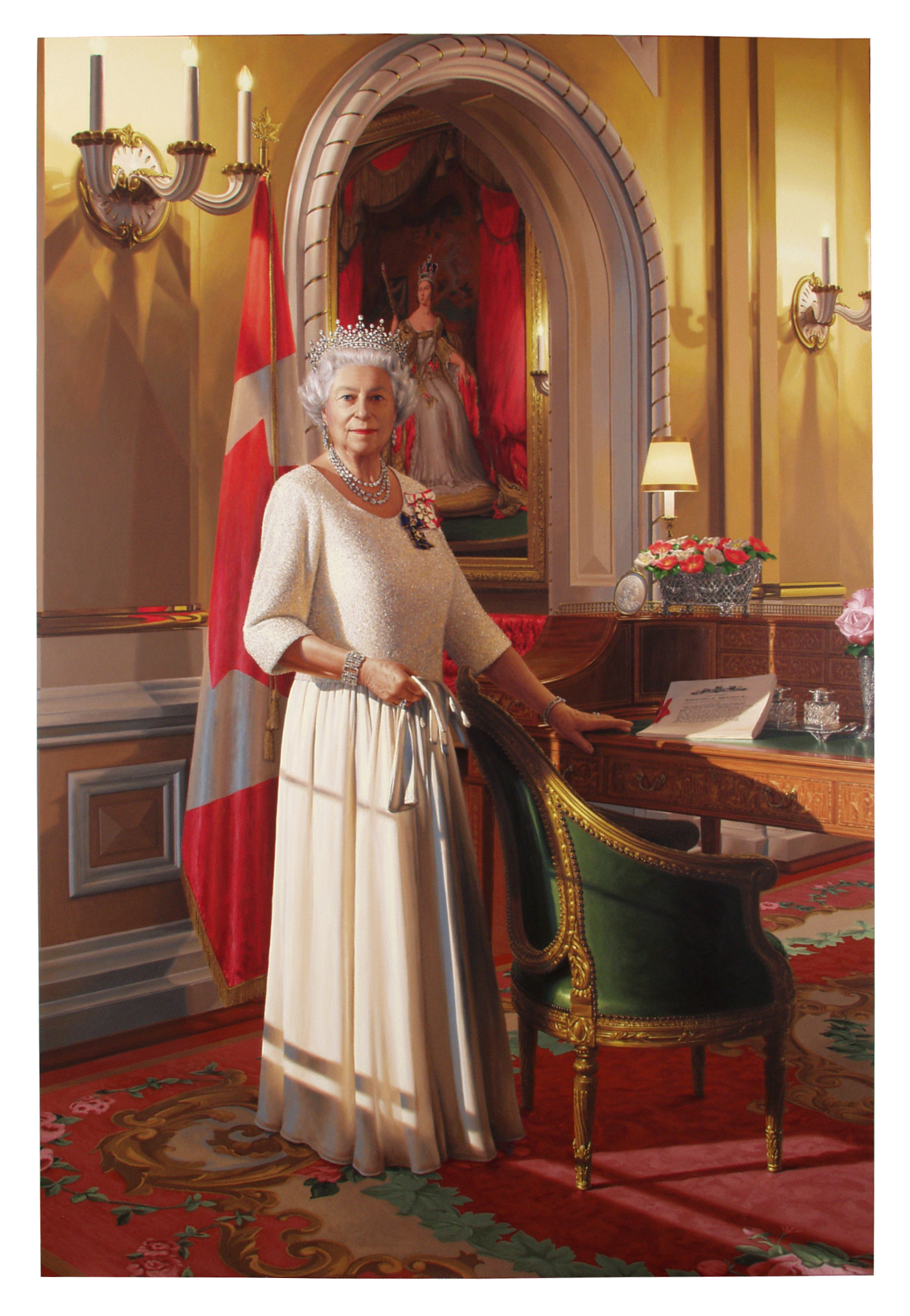
Phil Richards graduated from the Ontario College of Art (OCA), before it became OCAD University, with a degree in Drawing and Painting in 1973 and has risen to become one of Canada’s most prominent painters.
Richards’ commissions include official portraits for many government leaders, including provincial Premiers, Speakers and Lieutenant Governors; education leaders at universities such as Acadia University and Dalhousie University; and business leaders including the CEOs and Presidents of Caldwell Group, London Life and Scotiabank.
One of his most notable commissions is, of course, the official Diamond Jubilee Portrait of the late Queen Elizabeth II for the Government of Canada. The portrait was commissioned in 2010 by the Government of Canada and unveiled at Buckingham Palace on June 6, 2012.
Painting the late Queen’s portrait was a collaborative process, Richards says. In an article reflecting on his experience for the Monarchist League of Canada, he notes that he had a few audiences with the late Queen in order to develop the final portrait between the time it was commissioned and the time it was unveiled. In total, he says that the work on the project had taken about seven months, spread out over a two-year period.

“[…] I had never met anyone who could examine an image of themselves with such objectivity,” wrote Richards. “I was impressed not only by her inquisitive nature, but also by her engagement with the project, her focus on detailed information, and her ability to consider the painting of the portrait from the artist’s perspective.”
Richards said that he would be watching the “pomp and pageantry” Coronation of Their Majesties King Charles III and Queen Camilla from home in Toronto this past weekend, noting that it would probably resonate more with him than if he had not painted the late Queen’s portrait.
Richards’ commissioned works extend to large-scale murals for Cinedom Media Complex in Cologne, Germany; Cineplex and the CF Toronto Eaton Centre in Toronto; and the Ottawa Congress Centre. His work can be found in numerous private, public and corporate collections in North America and Europe, including the Art Gallery of Ontario.
In conversation with Phil Richards
What inspires your work?
Initially, the art of the past is what inspired me as a youngster to start making my own art. At this stage of my life and career, it is art of the past, but sometimes, the art of my own past. I’ve been working for 54 years now, and when you build up a volume of work at that size, it becomes your own kind of personal art history. In terms of fundamental inspiration to be an artist, it’s a fascination with the world around me, and with the universe, and trying to understand how it all fits together and really create meaning for yourself. It’s a philosophical search in one way, but in another, it’s the absolute pleasure of being creative–of making something, making anything really.
How did your education at OCAD U support your career as one of Canada’s most prominent painters?
I went to the Ontario College of Art from 1969 to 1973, and my first year was a foundation year, and in my second year I went into the Drawing and Painting department and there was a lot of political turmoil down there. There was a revolution that took place in my second year, where the new head of the department was Dennis Burton, and he brought in a lot of his peers as teachers. It was an exciting time for us as students. But in our third year there was yet another revolution, because there was so much turmoil with him coming in and a lot of his crowd and changing so much of the ideology of painting. Then they brought in a new president, Roy Ascott, with a lot of his own people that had a different attitude towards drawing and painting. And in my fourth year a totally new admin came in.
The sum effect of all these revolutionary changes [is what] you’d think would be really chaotic and an impediment to my artists’ education was actually just the opposite. It exposed me and my group to radically different ideas–oppositional ideas to one another–so we had to pick what we were going to do, and if we took a stance, we had to defend it against these other ideologies. OCA gave me this exposure to widely varied attitudes towards art and artmaking, and it helped me decide what I didn’t want to do.
What advice do you have for artists and designers currently studying at OCAD U to pursue their careers, like you did?
On a personal level, what I’d say to them is that, from my own experience, I think that artistic success is based 20 per cent on talent, but 80 per cent on perseverance. The other bit of advice I’d give them is to try to understand the meaning of rejection, because whatever you do, you’re going to be rejected more than you’re accepted, no matter how successful you are. You have to understand, it’s not a repudiation of your talent or your abilities, it’s just that you didn’t fit the bill for whatever job was coming up or whatever show people wanted to mount. Probably the hardest thing for an artist to do is to maintain self confidence in the face of rejection. I would say, work as hard as you can to understand the nature of your particular personality and talent, and how that can be applied to the art that you make.
What makes art to me different and magical from other objects in the world is its universal appeal, regardless of its political, religious or ideological content. Beautiful objects are attractive to anyone, and concepts of beauty can certainly change, but the search for beauty, I think, is universal in humanity.
All photos courtesy of Phil Richards.